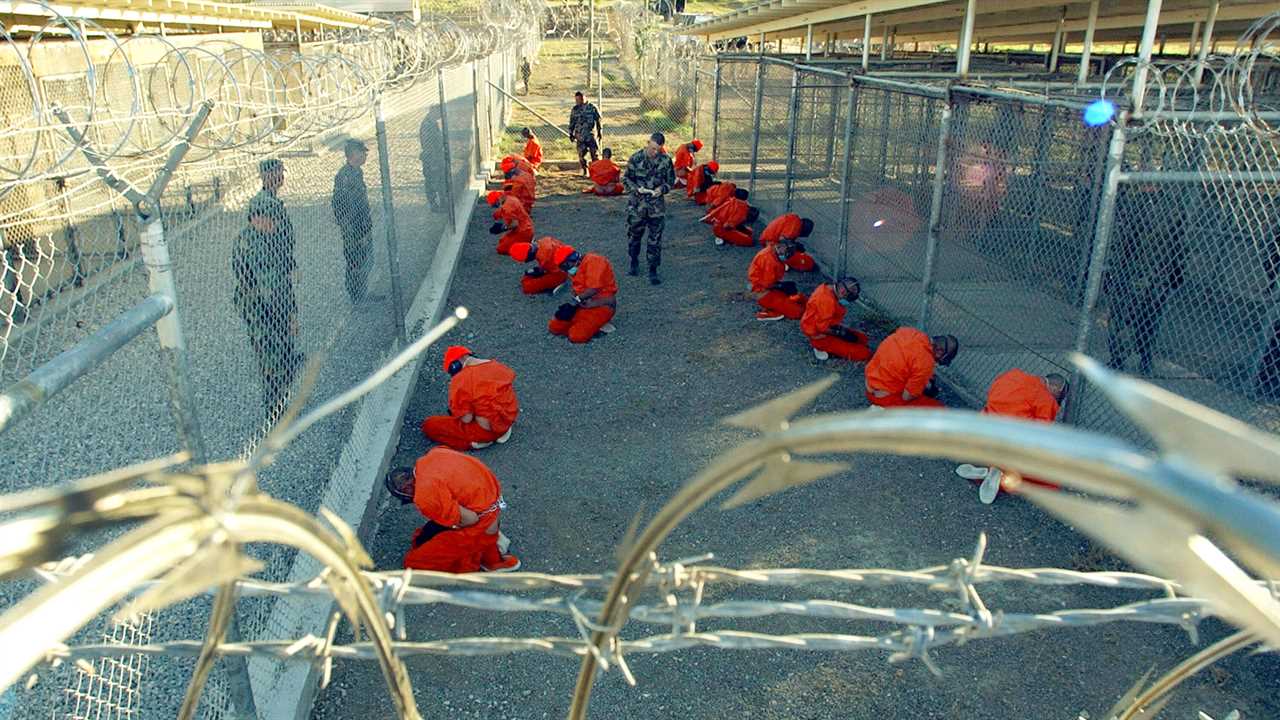
GUANTÁNAMO BAY, Cuba — Four months to the day after the Sept. 11 attacks, a photographer hoisted a camera above shiny new razor wire and took a picture of 20 prisoners on their knees in orange uniforms, manacled, masked and heads bowed.The image ignited a debate over what the United States was doing at its offshore prison, which continues operating to this day. It also became one of the most enduring, damning photos of U.S. detention policy in the 21st century.But lost in time and collective memory to many is that the picture was not some leaked image of torture that the public was not meant to see. It was taken by a U.S. Navy photographer, intentionally released by the Defense Department.“I was doing exactly what I was assigned to do,” said the photographer, Shane T. McCoy. “It was my job to document it. I absolutely had to photograph it. And I had to send it up.”The date was Jan. 11, 2002. In Afghanistan and Pakistan, local allies had scooped up hundreds of suspected foreign fighters and Qaeda members and delivered them to U.S. forces. The C.I.A. had yet to establish its secret prison network. The detainee abuse scandal at Abu Ghraib prison in Iraq was years away.And an Air Force cargo plane had delivered the first prisoners to the base in southeast Cuba — the “least worst place” for the mission, Defense Secretary Donald H. Rumsfeld said. Mr. McCoy, a petty officer at the time, drew the assignment of photographing opening day at Camp X-Ray for the elite Combat Camera unit.In time, the United States would hold about 780 prisoners at the remote outpost. In a matter of months, after the first 300 prisoners were brought there, the Pentagon had put up crude rows of cells welded from shipping containers. Later, the military built air-conditioned prisons, where the last 39 detainees are held today.To the chagrin of a succession of military commanders, the image of those first 20 men on their knees would not go away.Newspapers and magazines routinely republish it in articles about the prison, the base and the United States’ war on terrorism. Protesters don orange and re-enact it. Islamic State fighters usurped it and put hostages in bright orange clothing, then executed them.It has become so pervasive, so emblematic of U.S. detention policy that some do not realize that it was taken at Guantánamo Bay, the prison that the George W. Bush administration made its showcase detention operation.In a recent episode of “60 Minutes” about a former National Security Agency contractor who leaked a government document, the Guantánamo photo that was released by the U.S. military filled the screen to illustrate the idea that the government has used classification “to conceal wrongdoing — torture in the war on terror for example.”How you see that photo depends on “your politics, your awareness of Guantánamo and what went on there — on your capacity for empathy, whether or not anybody in your family has ever been in prison,” said Anne Wilkes Tucker, the former curator of photography at Houston’s Museum of Fine Arts.“That picture will be interpreted and reinterpreted for probably ever,” she said. “It’s so rich, and can solicit 180-degree interpretations. From ‘We got them’ to ‘More than half are probably innocent.’”Hours before the first 20 men arrived, the Marine responsible for setting up Camp X-Ray, Brig. Gen. Michael Lehnert, described them as “the worst of the worst” of the detainees held in Afghanistan. It would eventually be clear that was not true.ImageCamp X-Ray at Guantnamo Bay held prisoners sent from Afghanistan.Credit...Doug Mills/The New York TimesJust two are held today. Of those first 20, eight were released by the time Mr. Bush left office. None were ever charged in the Sept. 11 attacks.In Senate testimony last month, Mr. Lehnert, who retired as a major general, called the enterprise he had set up misguided, at odds with U.S. values. He urged that it be closed.Mr. McCoy, 47 and now a photographer for the U.S. Marshals Service, recalled that day as a long one. He had split the duties with another Navy photographer, and with a coin toss ended up documenting the men awaiting registration in a makeshift, open-air holding compound.He chose about 100 images, wrote captions and sent them to Washington.At the Pentagon about a week later, news organizations were clamoring for transparency at the nascent detention operation in Cuba. Grainy, night-vision news footage had been broadcast from Afghanistan showing U.S. soldiers leading prisoners in rags, with bags on their head.“The challenge was that the Geneva Conventions specifically prohibit holding detainees up to public ridicule or humiliation,” Victoria Clarke, Mr. Rumsfeld’s spokeswoman, wrote in her 2006 memoir,By: Carol Rosenberg
Title: 20 Years Later, the Story Behind the Guantánamo Photo That Won’t Go Away
Sourced From: www.nytimes.com/2022/01/10/us/politics/guantanamo-photos-prisoners.html
Published Date: Mon, 10 Jan 2022 20:56:43 +0000
Read More
 UK PoliticsWorld PoliticsVideosPrivacy PolicyTerms And Conditions
UK PoliticsWorld PoliticsVideosPrivacy PolicyTerms And Conditions
